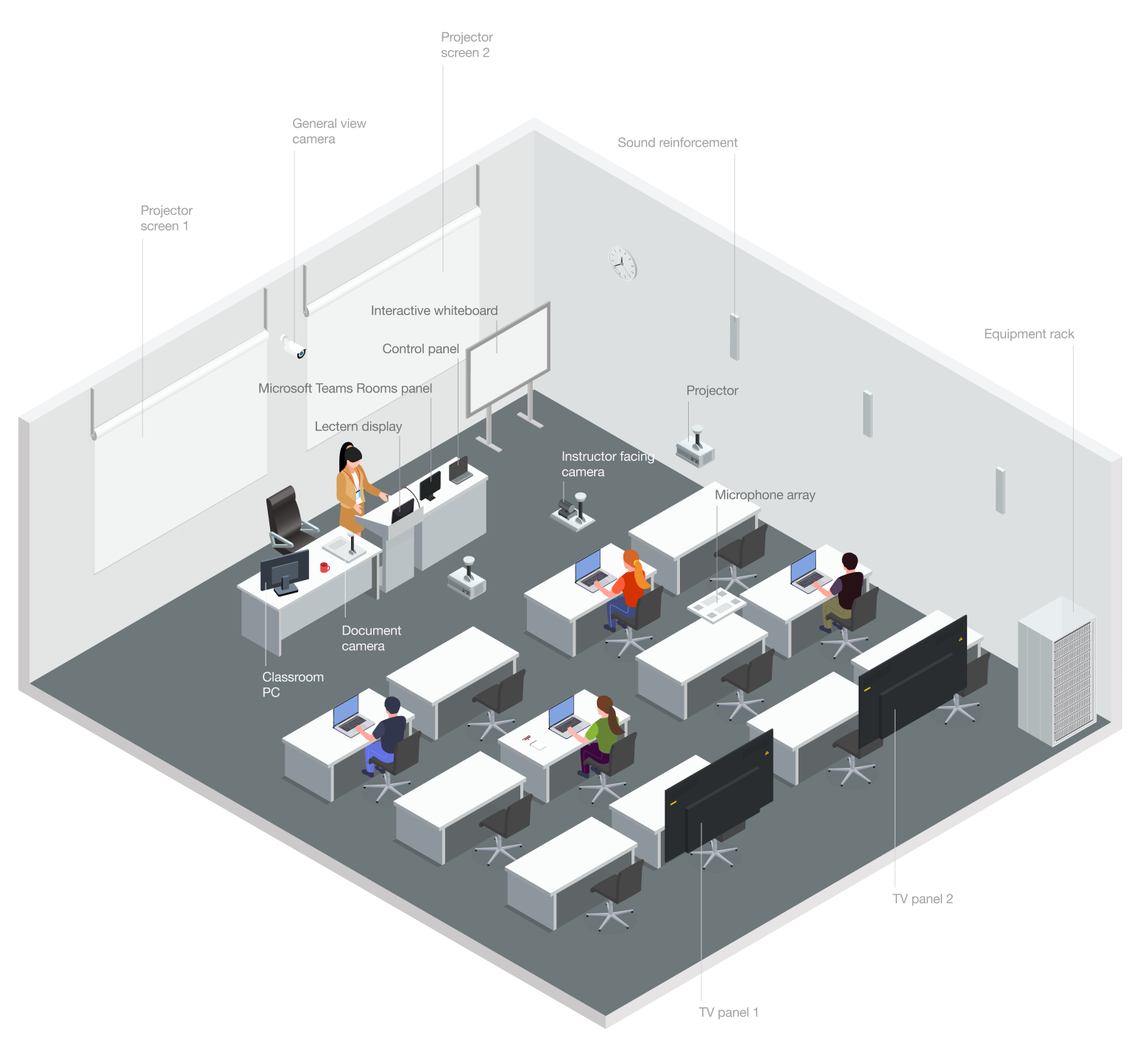24 June 2022
The Graduate School of Management St. Petersburg University (GSOM SPbU), with the support of VTB Bank, started its digital transformation in 2018. That is why the Business School was better equipped than others for the emergency shift to distance learning during the pandemic and became a pioneer in implementation of hybrid learning and teaching in the country.
Having designed a hybrid classroom from scratch and gained precious insights, the GSOM SPbU team presented a universal concept of a hybrid classroom that can be implemented at any university.
In the open webinar "Hybrid Audience — Do It Yourself", the concept of the GSOM SPbU hybrid space was presented, which came with the teaching methodology and responded to the needs of the educational process participants — faculty and students. The expertise of three teams was combined: the UX / UI team, methodologists, and technical specialists. In practice the design of a hybrid classroom goes beyond mere stitching together various types of hardware and software.
![]()
Having studied some of the world’s best university practices, we found out that depending on the university’s needs, technical solutions can vary in their complexity from simple video conference software installed on a professor’s computer to all-around TV studio-like facilities. The difficulty level options depend on the pedagogical request. The most complex solution allows to implement a wide range of learning tasks, yet it is often more expensive than others.
The universal concept of the hybrid classroom design is a technical solution that takes into account the key principles of hybrid teaching and learning:
The technical task for designing the GSOM SPbU hybrid classroom was written in the interviews with educational process participants – the faculty and students both online and offline. As a result, user paths were developed — schemes that reflect the participants requests before, during and after the educational process. Technical solutions were developed for every instructor and student need, and then were divided into subsystems: image, sound, and other equipment.

The GSOM SPbU hybrid classroom setup developed by a cross-functional team.
Image
The hybrid classroom is equipped with an auto-tracking camera that gives a close-up shot of the speaker and follows them across the classroom. A general view camera is used for an overall shot of the classroom. The solution enables the instructor to move around freely and helps online and offline students maintain eye contact.
Sound
For classroom sound transmission a beamforming microphone array is used, which captures multi-channel audio from anywhere in the classroom. An audio processor then removes background noise, enhances the active speakers’ voices and gives priority to voices coming from specified areas. The technology helps the instructor and students move more freely around the classroom without the constraints of wearable microphones.
Presenting information
Content can be accessed from the classroom’s presentation projector screens, TV panels, interactive whiteboard and document camera. The necessary set of equipment is determined by the scenarios (presets) depending on the instructor’s needs.
Digital environment
Classes are organized and held with the help of two digital platforms, Microsoft Teams and Blackboard. Collaboration between online and offline participants is assured by additional software such as online document editors, Kahoot, Mentimeter, Miro, etc.
Systems management
A controller serves as a single classroom control center. Users can gain access to controls via a touch pad on the instructor’s desk. The instructor can automatically launch a required set of equipment by selecting one of the hybrid learning modes: “lecture & presentation”, “discussion”, “group work” and “online project presentation”. The selected mode automatically forms video streams for the classroom displays and online participants. Also, the control panel allows to control lighting and doors in the classroom. Its simple and intuitive interface helps use the system without consulting the manual.
A well-considered list of equipment combined with training for all the key participants of the hybrid classroom learning process allowed to minimize the number of requests for technical support.
![]()

Reportedly, during the academic semester only one in twenty classes required technical assistance.
При использовании данного сайта Вы подтверждаете свое согласие на использование ВШМ СПбГУ cookie файлов. С подробной информацией Вы можете ознакомиться, перейдя по ссылке.